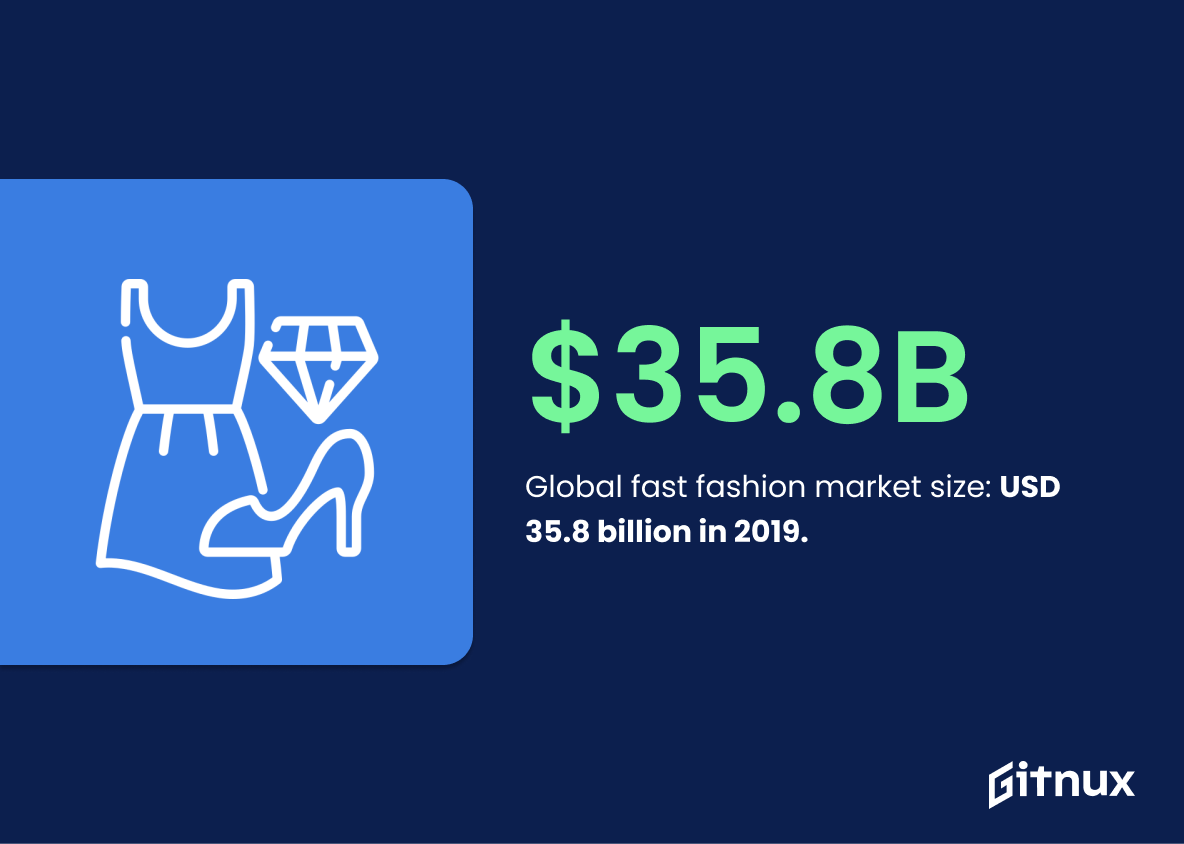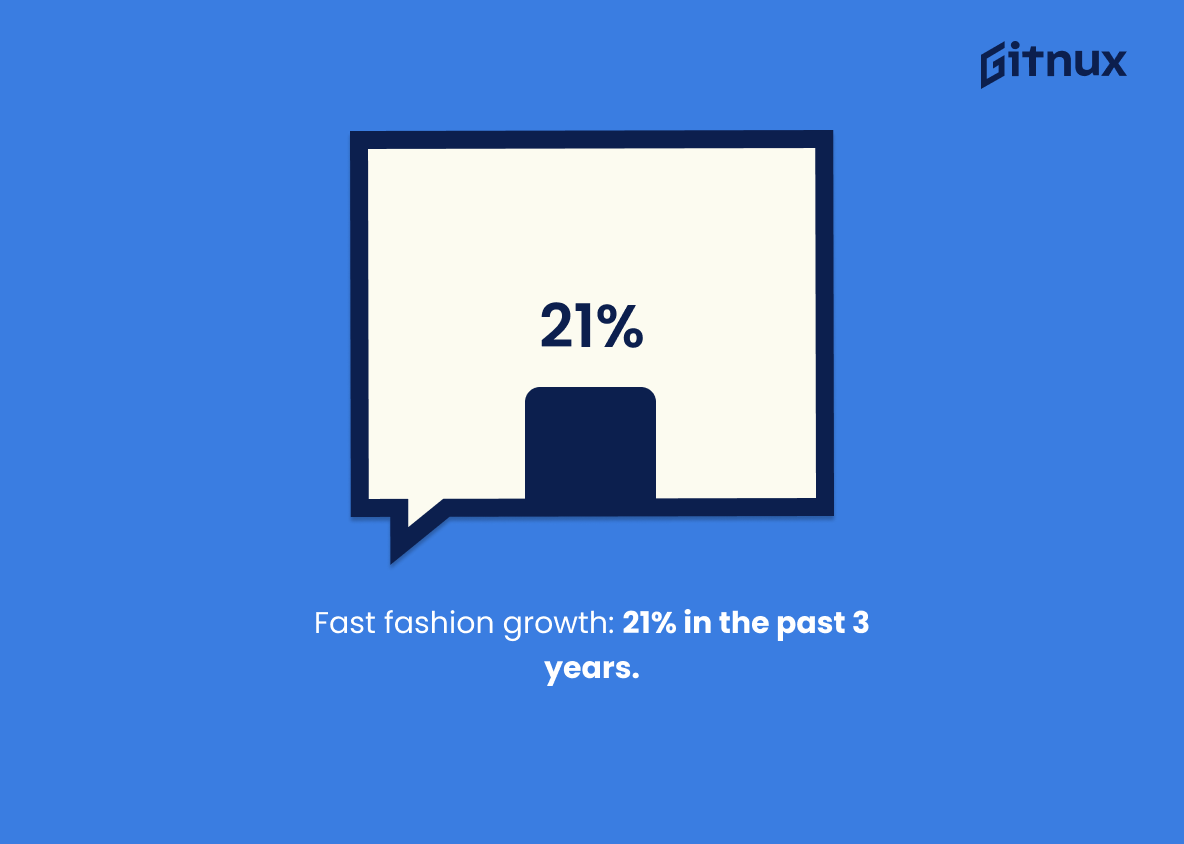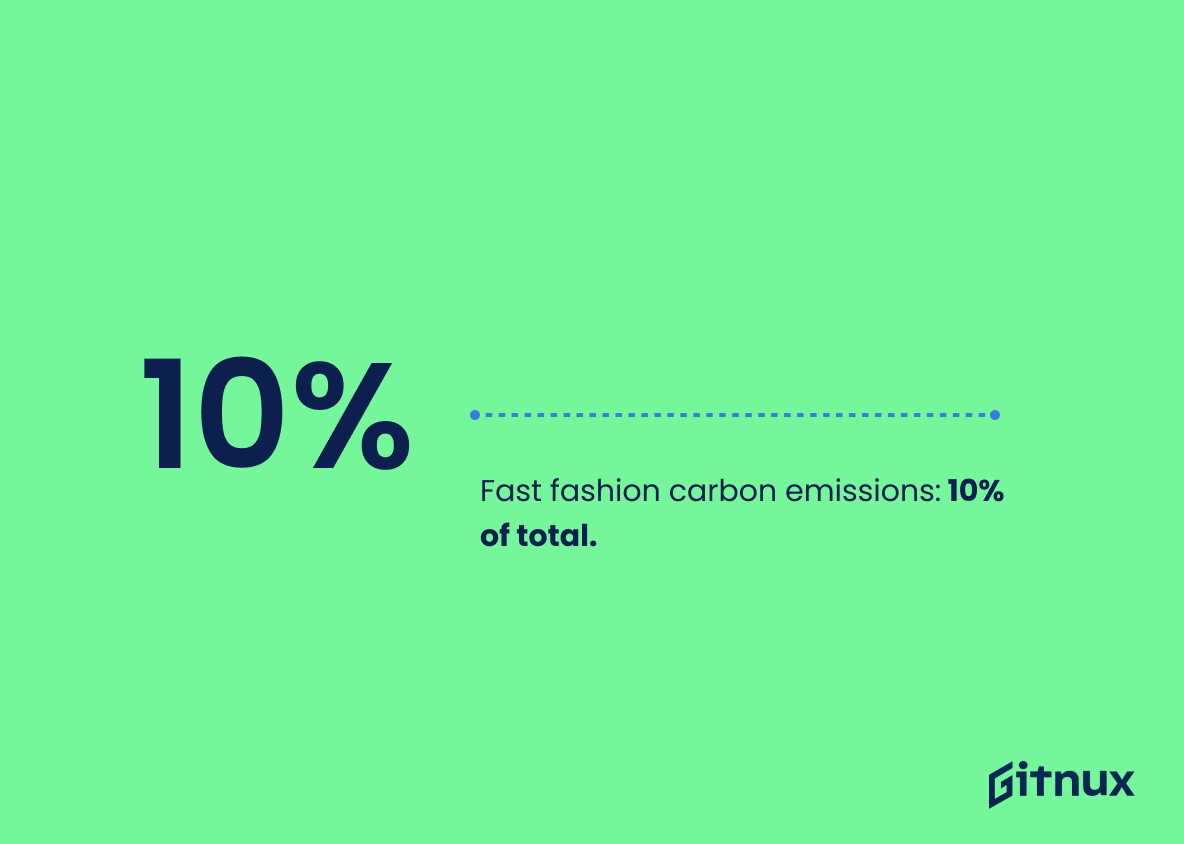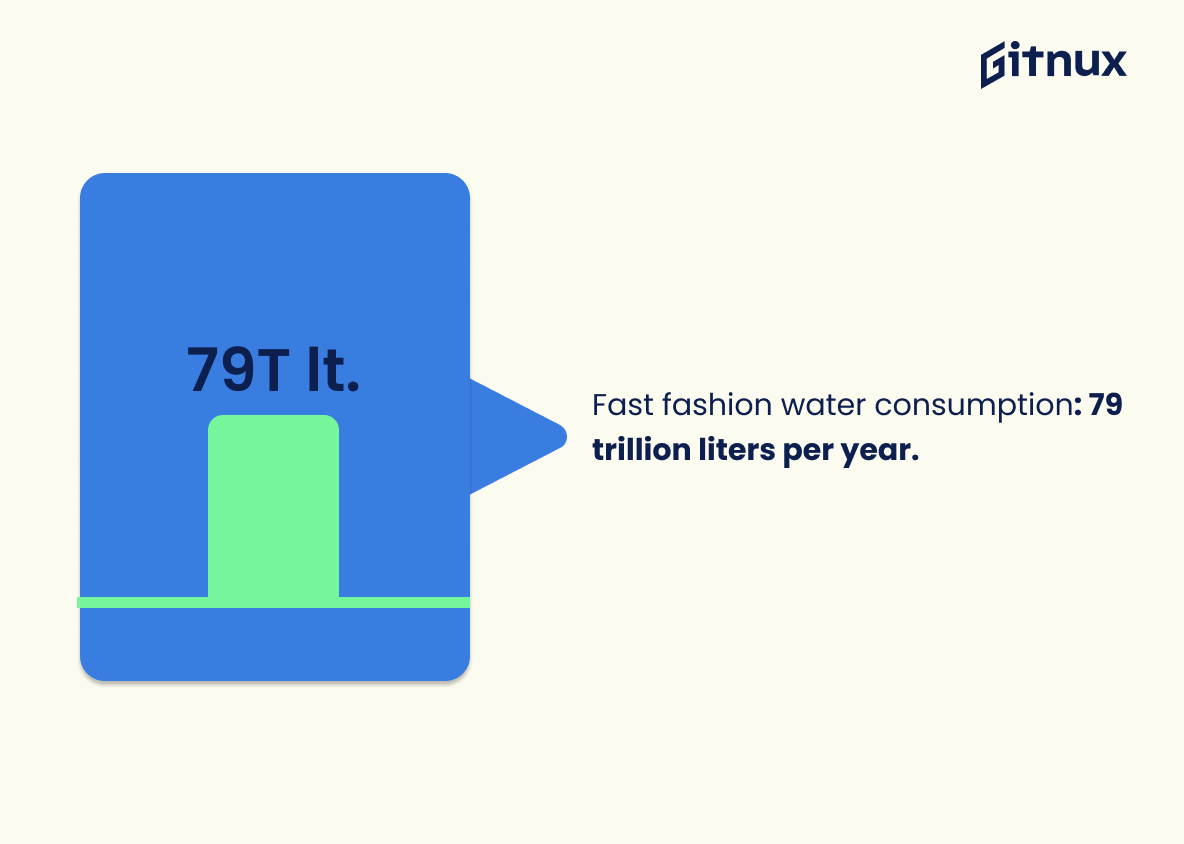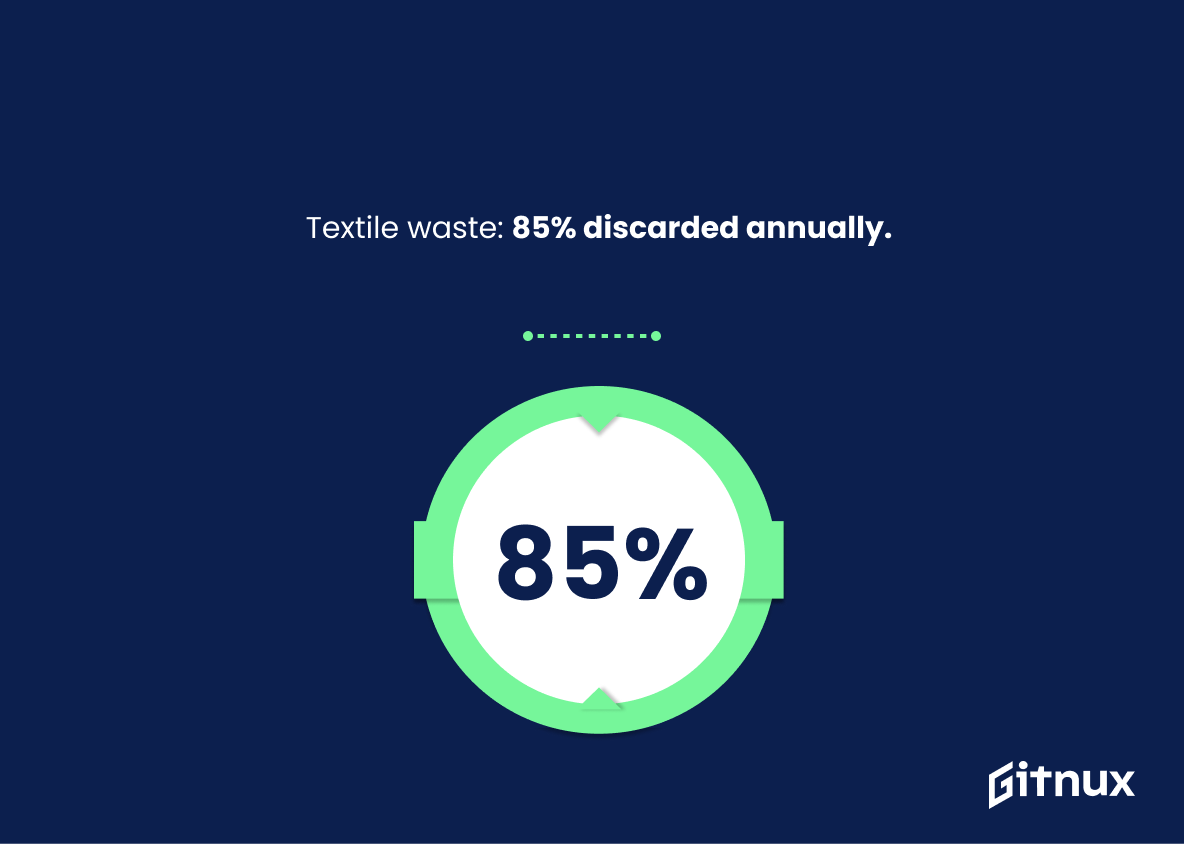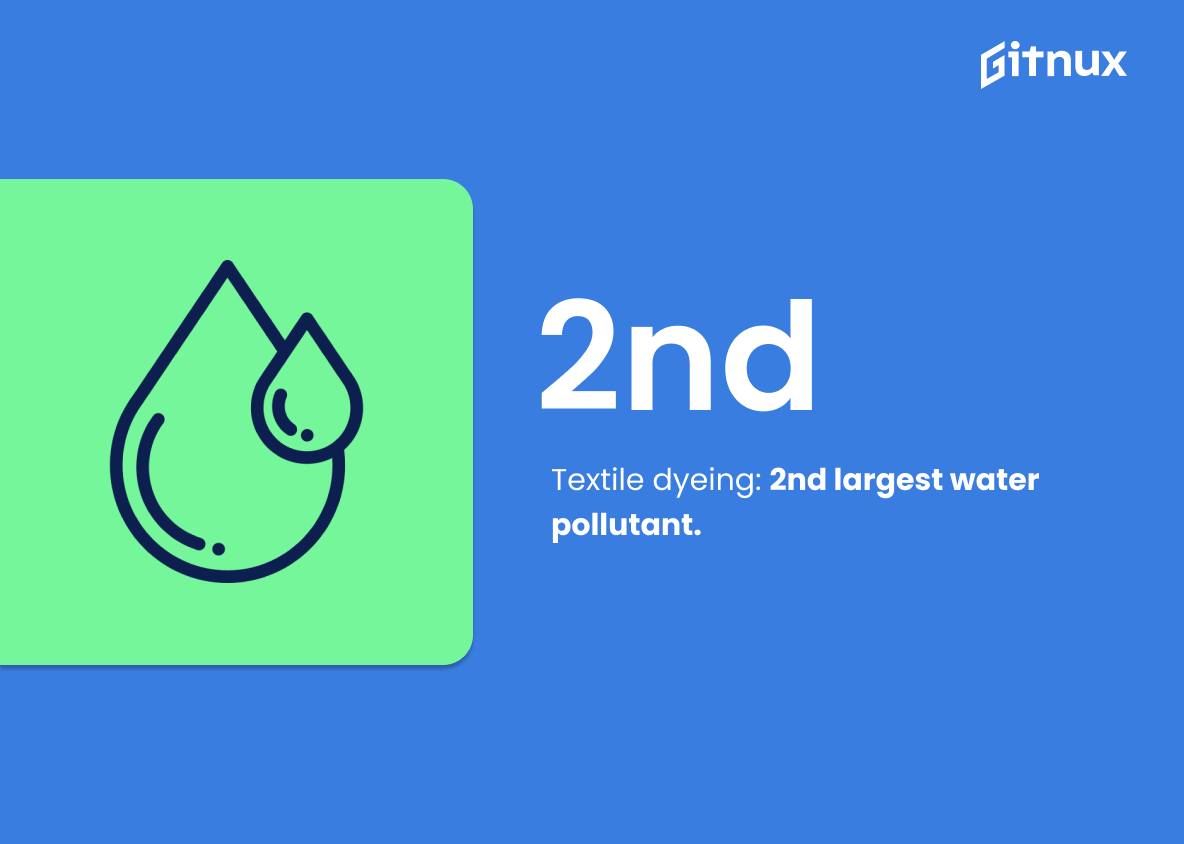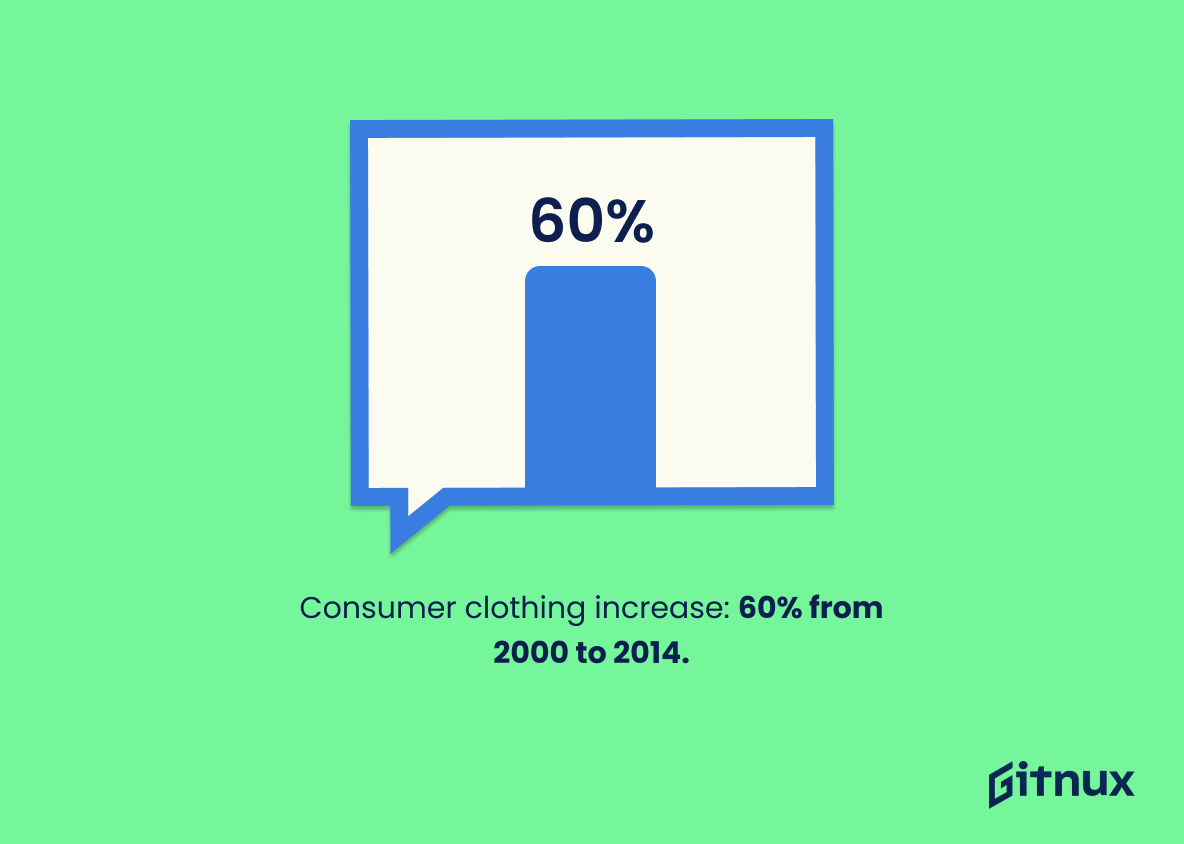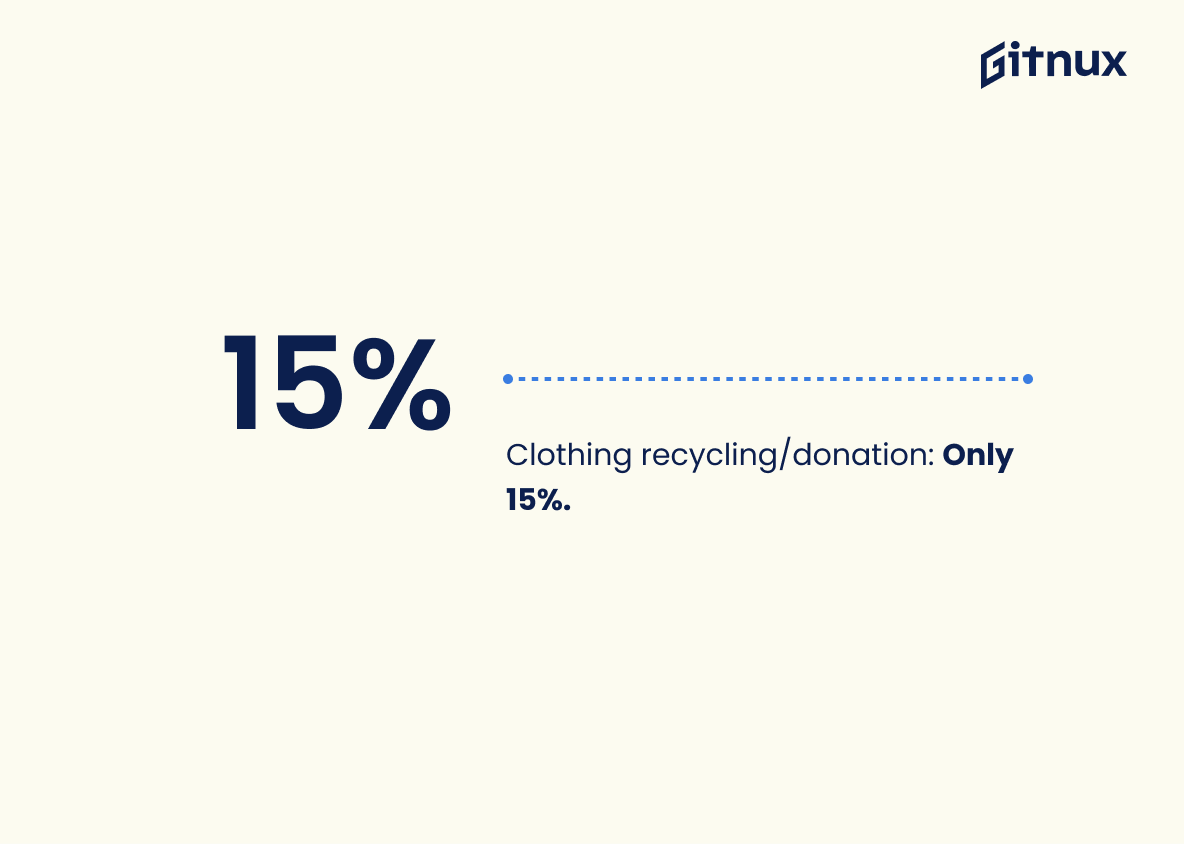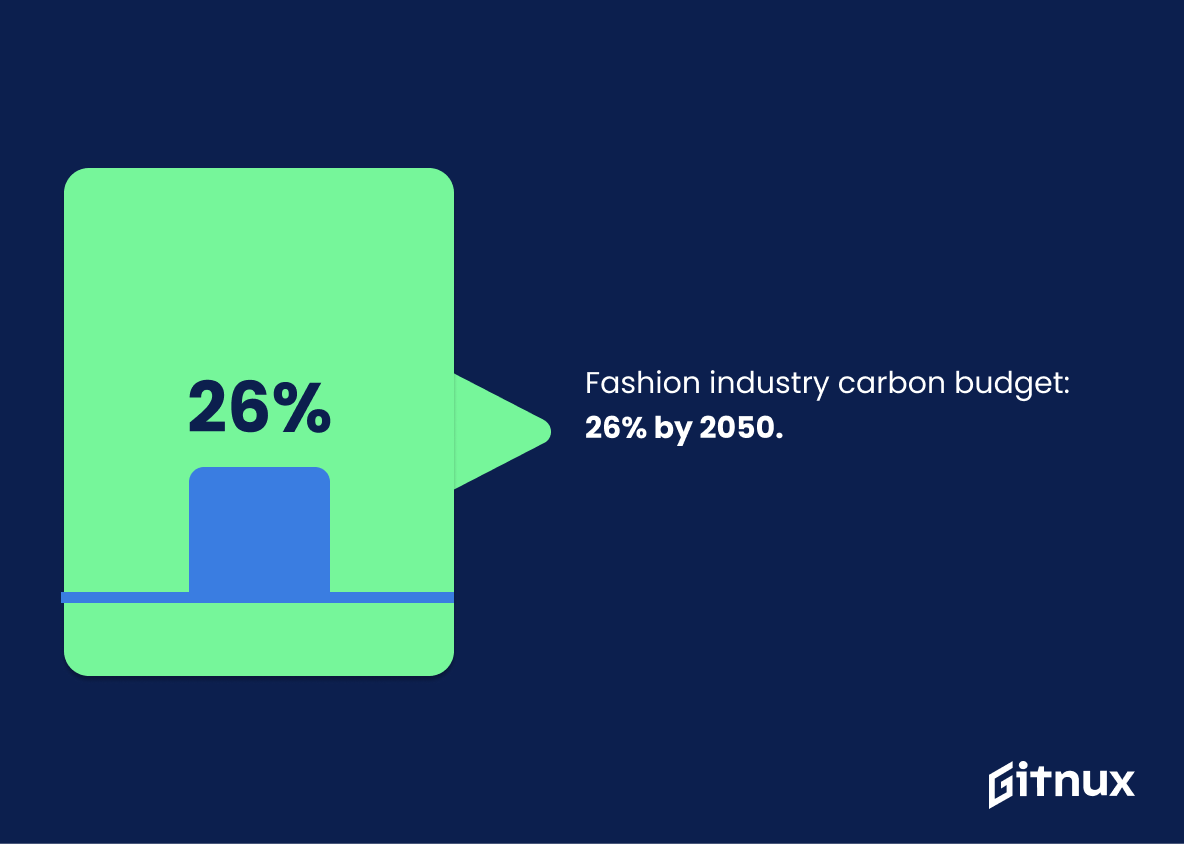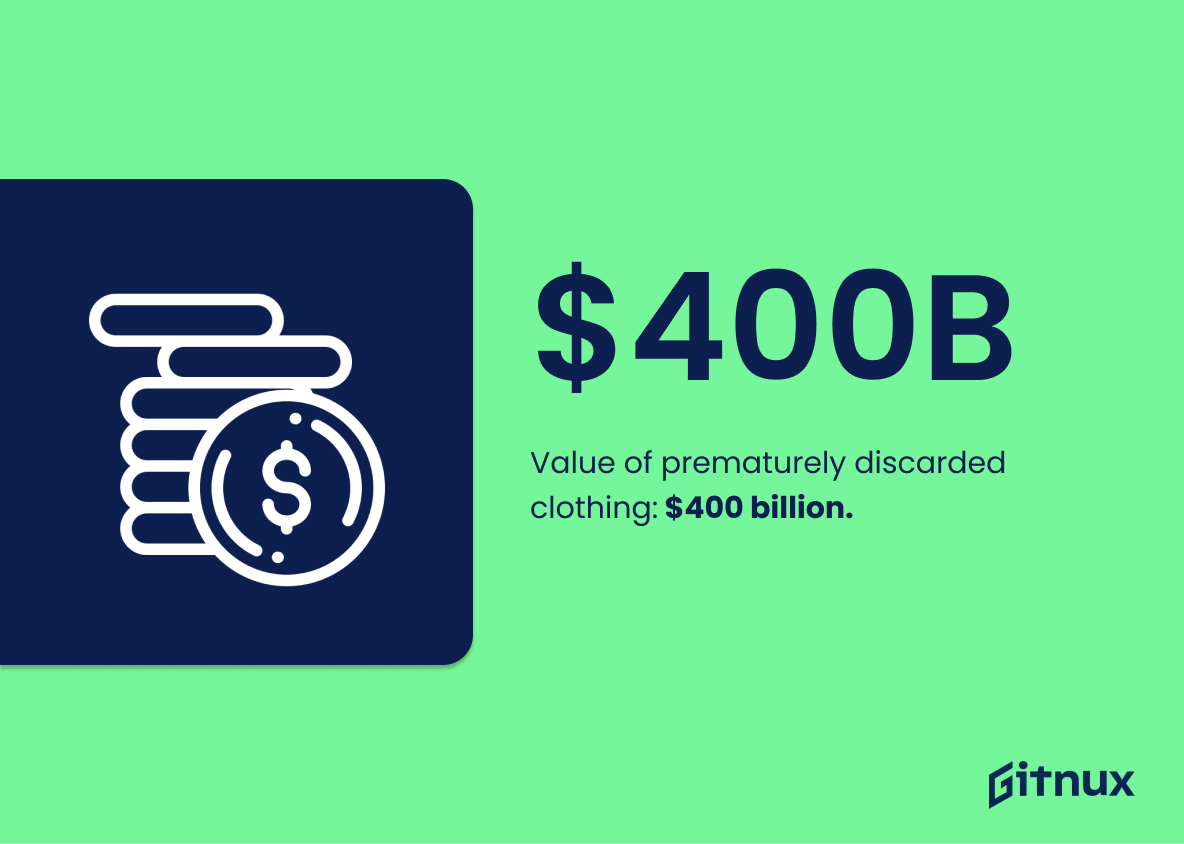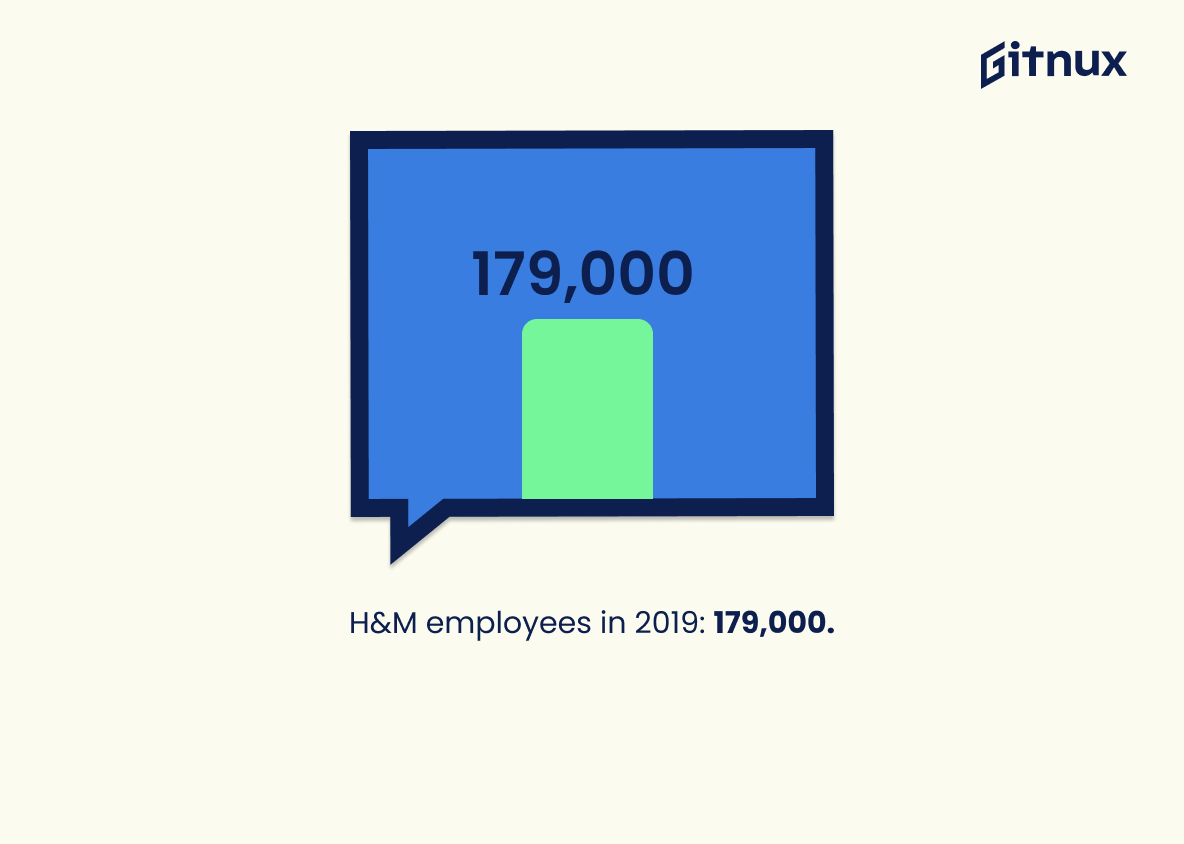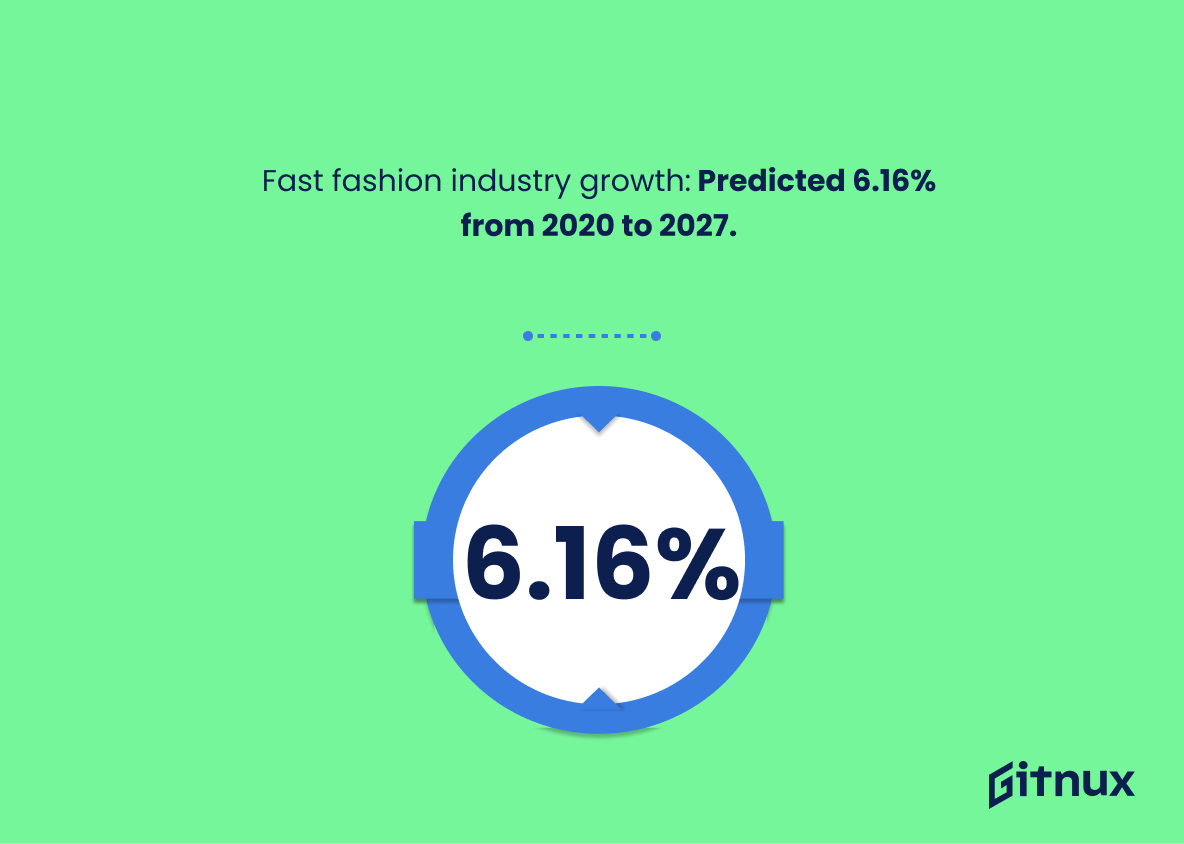Fast fashion facts and statistics play a pivotal role in understanding the global fashion landscape. For decades, fast fashion has not only dictated trends but has also left significant imprints on the environment and the lives of the garment workers. In this market data report, we will delve deep into the intricate details of fast fashion, shedding light on the sheer volume of clothing produced, its environmental repercussions, and the human cost behind the labels.
Furthermore, this report aims to highlight the transformative shifts within the industry as it grapples with mounting consumer demand for sustainability and ethical practices. Without further ado, let’s unravel the data and insights that shape the fast fashion world.
The Most Important Statistics about Fast Fashion
Growth of clothing sales and decline in clothing utilisation since the start of the millennium.
Clothing sales doubled from 100 to 200 billion units a year, while the average number of times an item was worn decreased by 36% overall.
More than $500 billion are lost every year due to a lack of recycling and clothing utilization.
The fashion industry consumes a monstrous amount of water, around 93 billion cubic metres, leaving much of it contaminated by toxic chemicals.
20% of global wastewater comes from textile dyeing.
There are 92 million tons of clothes-related waste each year, which produces half a million tons of microplastics.
93% of brands surveyed by the Fashion Checker aren’t paying garment workers a living wage, fast fashion retailers employ thousands of people from Bangladesh, India, China, Indonesia, and other developing nations as a cheap workforce.
Not only do these people have to work exhausting hours, but the payment they get is far from fair.
More than $500 billion of value is lost every year due to clothing underutilization and the lack of recycling.
Fast fashion brands like Fashion Nova, SHEIN, Revolve, and Romwe all score less than 10% on the Fashion Transparency Index.
The textile sector still represents 10 to 20% of pesticide use.
What are Fast Fashion Trends in 2024?
The Fast Fashion Market size was valued at $122,257.5 Million in 2021 and is projected to reach $283,457.5 million by 2030; growing at a CAGR of 10.13% from 2023 to 2030.
The Fast Fashion Market is also driven by the growing youth population’s demand for affordable clothing.
The Global Fast Fashion Market report provides a holistic evaluation of the market.
Increasing Adoption of affordable clothes by the rising youth population is the main driver of the market.
Its expected growth rate through 2026 is 7.7% and the expected market size by 2026 is $133.43 Billion.
The global fast fashion market grew from $91.23 billion in 2021 to $99.23 billion in 2022 at a compound annual growth rate (CAGR) of 8.8%.
Do Fast Fashion Statistics Vary by Country?
10 countries dominate the market for retail purchasing: China 40 billion, USA 17 billion, India 6 billion, Japan 3.3 billion, Germany 2.2 billion, UK 2.1 billion, Russia 2 billion, France 1.5 billion, Italy 1.3 billion and Brazil 2.3 billion.
Together, these markets account for three-quarters of the clothes and more than two-thirds of the shoes sold each year.
China is particularly dominant – the quantity of garments sold there is more than the other nine countries in the list combined.
By comparison, in the UK, which has a similar GDP per capita to the US, consumers buy on average 20 fewer garments per year (33 compared to 53) but spend about 70% more per item. Japanese consumers buy roughly half the amount of US consumers and spend 31% more on each item.
Another reason for the growth is the increase in per capita sales in developed countries.
The UK consumes more clothes than any other country in Europe.
The largest consumer market and producing country, UK and China, successfully adopt sustainable fashion, it would significantly push forward the global agenda for ethical fashion.
How Does Fast Fashion Affect Clothing Production?
Global per capita textile production has increased from 5.9 kilograms to 13 kilograms per year(a 45% increase) from 1975 to 2018.
Consumption of apparel has reached 62 million tonnes a year and is expected to be 102 million tonnes a year by 2030.
Clothes are now being produced at twice the amount from the year 2000, which means that there is an increase in waste as well.
15% of the fabric used in production is wasted, and 57% of all discarded clothes end up in landfills.
150 million garments were produced in 2012 and it is estimated that at least 60% of those garments have been discarded.
Currently, apparel companies produce 53 million tonnes of clothing annually, and this number is expected to rise to 160 million tonnes in 2050.
21 billion pounds of textiles get sent to landfills annually in the United States alone.
The majority of the negative environmental effects of fast fashion are caused by the fact that clothes are produced at an alarmingly high rate in large volumes.
Fast Fashion And Its Effect On The Economy
Fast fashion’s impact on the economy is huge and the industry continues to grow alongside the demand for trendy and affordable clothing.
It accounts for 4,78% of recent growth and 5.91% of future growth of the apparel industry. E-commerce has allowed the fast fashion industry to grow even faster.
In 2018, the fashion industry’s e-commerce revenue amounted to $481 billion and the average annual growth of this is expected to be 10.36%.
The global fashion industry grew by 57.15% between 2011 and 2020, going from $1051,66 billion to $1652,73 billion.
Clothing production has doubled in the past 15 years due to a growing middle class and increased per capita sales in developing countries.
It is estimated that by 2050 the world GDP will increase by 400% which will further increase the demand for clothing.
Addressing the environment and social issues caused by fast fashion could provide a $192 million overall benefit to the global economy in 2030.
Fast Fashion’s Effect on the Environment
In current times, the average person buys 60% more clothing than they would’ve 15 years ago.
Clothing is also kept for 50% less time, this means that the production rates in the fashion industry have increased to keep up with demands.
It is also responsible for 24% of insecticides and 11% of pesticides.
The fashion industry is the second biggest consumer of water.
According to the UN, the fashion industry is responsible for 8-10% of global carbon emissions.
This is more than the carbon emissions of the shipping and aviation industry combined.
2.5% of the world’s farmland is used to farm cotton for the fashion industry.
The fashion industry is one of the largest consumers of water. It takes 2,700 litres of water to make a cotton t-shirt.
Supplementary Statistics
The global fast fashion market size was USD 35.8 billion in 2019.
This is a powerful indicator of the immense size of the fast fashion market. It demonstrates the sheer scale of the industry and the potential for growth in the future. It also highlights the importance of understanding the fast fashion market and its implications for the environment, economy, and society.
Fast fashion has grown by 21% over the past 3 years.
It highlights the increasing popularity of this trend and the potential for further growth in the future. It also serves as a reminder of the environmental and social impacts of fast fashion, and the need for more sustainable practices in the industry.
Fast fashion produces 10% of all carbon emissions.
Thus, therer is a need for more sustainable practices in the fashion industry, as 10% of all carbon emissions is a significant amount. It is a call to action for consumers and companies alike to take responsibility for their part in the fashion industry and make changes to reduce their carbon footprint.
Fast fashion consumes 79 trillion liters of water per year.
79 trillion liters of water is an unfathomable amount, and it serves to illustrate the devastating impact that the industry has on our planet.
85% of textiles are discarded as waste every year.
With 85% of textiles being discarded as waste every year, it is clear that the industry is having a detrimental effect on the planet.
Textile dyeing is the second largest pollutant of water globally.
This shows the devastating impact that the industry has on our planet’s water supply, and serves as a call to action to reduce our reliance on unsustainable fashion practices.
The average consumer bought 60% more clothing in 2014 than they did in 2000.
Consumers are buying more clothing than ever before, likely due to the availability of cheaper, trendier clothing. This increase in consumption has had a significant impact on the environment, as the production of clothing has a large carbon footprint.
Only 15% of clothes are recycled or donated.
This displays the need for more sustainable practices to be adopted in order to reduce the amount of clothes that end up in landfills. It also serves as a call to action for consumers to be more mindful of their clothing choices and to support brands that prioritize sustainability.
The fashion industry could represent 26% of the global carbon budget by 2050.
If left unchecked, the industry could consume an alarming amount of the global carbon budget by 2050, leading to a host of negative consequences for the planet.
Fast fashion brands release 52 micro-seasons per year, on average.
With an average of 52 micro-seasons per year, it is clear that these brands are churning out new collections at an alarming rate. This has significant implications for the environment, as the production of new clothing requires a great deal of resources and energy.
The annual value of clothing discarded prematurely is $400 billion.
With $400 billion worth of clothing being discarded prematurely each year, it is clear that the fast fashion industry is having a detrimental impact on our planet and our wallets.
In 2019, fast fashion giant H&M had 179,000 employees.
The sheer size of H&M’s workforce is a testament to the power of fast fashion. With 179,000 employees, it’s clear that the industry is booming and that the demand for fast fashion is high. This statistic serves as a reminder of the impact that fast fashion has on the global economy.
The fashion industry generates 4% of the world’s waste each year.
It is a call to action for consumers to be more mindful of their fashion choices and for the industry to take responsibility for its environmental footprint.
Prices of clothing have been decreasing by about 8% per year due to fast fashion.
The prevalence of fast fashion has caused prices to drop significantly over the years, making it easier for people to purchase clothing at a lower cost. This has had a major effect on the industry, as it has made it more difficult for traditional clothing companies to compete.
The fast fashion industry is predicted to grow by 6.16% from 2020 to 2027.
The industry is expected to continue to expand in the coming years, indicating that it is a viable and profitable sector. This is important information for anyone interested in the fast fashion industry, as it provides insight into the potential for growth and success.
20% of industrial water pollution comes from the treatment and dyeing of textiles.
Thus, the production of textiles for the fashion industry is a major contributor to industrial water pollution, and that this pollution is a direct result of the demand for cheap, disposable clothing. This statistic serves as a call to action for consumers to be more mindful of their fashion choices and to support sustainable fashion brands.
Fast fashion brands hold 9.52% share of the global women’s apparel market.
This is a powerful indicator of the influence of fast fashion brands in the global women’s apparel market. It shows that fast fashion is a major player in the industry, and its presence is growing. This statistic is important to consider when discussing the impact of fast fashion on the environment, labor practices, and consumer spending.
The average person throws away 81 pounds of clothing annually.
On this, we can see the sheer amount of clothing that is being discarded each year, and the amount of resources that are being wasted in the process. It serves as a call to action for people to be more mindful of their clothing consumption and to make more sustainable choices.
Conclusion
The fast fashion industry is growing rapidly and has a major impact on the environment. It is clear that the industry needs to take steps to reduce its environmental footprint.
Consumers can also play a role in reducing the environmental impact of fast fashion by being mindful of where they shop, what they buy, and how they dispose of their clothes. Fast fashion can be fashionable and sustainable, but only if we all work together to make it happen.
References:
United Nations: “UN Alliance For Sustainable Fashion addresses damage of ‘fast fashion’”, cited in February 2023 (Source)
BBC: “Fast fashion: How clothes are linked to climate change”, cited in February 2023 (Source)
Fashion Revolution: “Overconsumption in the fashion industry”, cited in February 2023 (Source)
Earth.org: “10 Stunning Fast Fashion Waste Statistics”, cited in February 2023 (Source)
Earth.org: “Fast Fashion Pollution and Climate Change”, cited in February 2023 (Source)
Fast Company: “Your H&M addiction is wreaking havoc on the environment. Here’s how to break it”, cited in February 2023 (Source)
Earth.org: “The 10 Essential Fast Fashion Statistics”, cited in February 2023 (Source)
Good On You: “20 Hard Facts and Statistics About Fast Fashion”, cited in February 2023 (Source)
Verified Market Research: “Global Fast Fashion Market Size By Type (Adults Wear, Teens Wear, Kids Wear), By Application (Men, Women, Children), By Distribution Channel(Offline, Online), By Geographic Scope And Forecast”, cited in February 2023 (Source)
The Business Research Company: “Fast Fashion Market Size 2022 And Growth Analysis”, cited in February 2023 (Source)
Common Objective: “Fashion Consumption Statistics: How Much Do We Buy?”, cited in February 2023 (Source)
TRVST: “Global Fashion Industry Statistics”, cited in February 2023 (Source)
Celtic and Co: “FAST FASHION: the environmental impact of our throwaway fashion habit”, cited in February 2023 (Source)
Earth.org: “10 Stunning Fast Fashion Waste Statistics”, cited in February 2023 (Source)
